ChessPrime is a web application, also available on Android and iOS. It is a 360º tool extremely useful for any chess player. In general terms, it can be used for analysis, databases, chess puzzles, searching for tournaments, players, games, problems, and more.
It also features a training program that is pioneering, flexible, and very powerful, based on spaced repetition learning to flatten the forgetting curve and retain the knowledge acquired with the app more effectively.
Through this link, you can fill in your details or quickly create it with your Google or Lichess account.
Through this link, enter the email address of your account and follow the instructions.
In a game or analysis board, the opening and variation played are automatically identified (it even considers transpositions). In the PGN editor, you have a direct link to the opening:

Alternatively, you can also use the opening search engine located in the Openings section. You can play the moves, and the system will show the openings corresponding to the current position on the board:
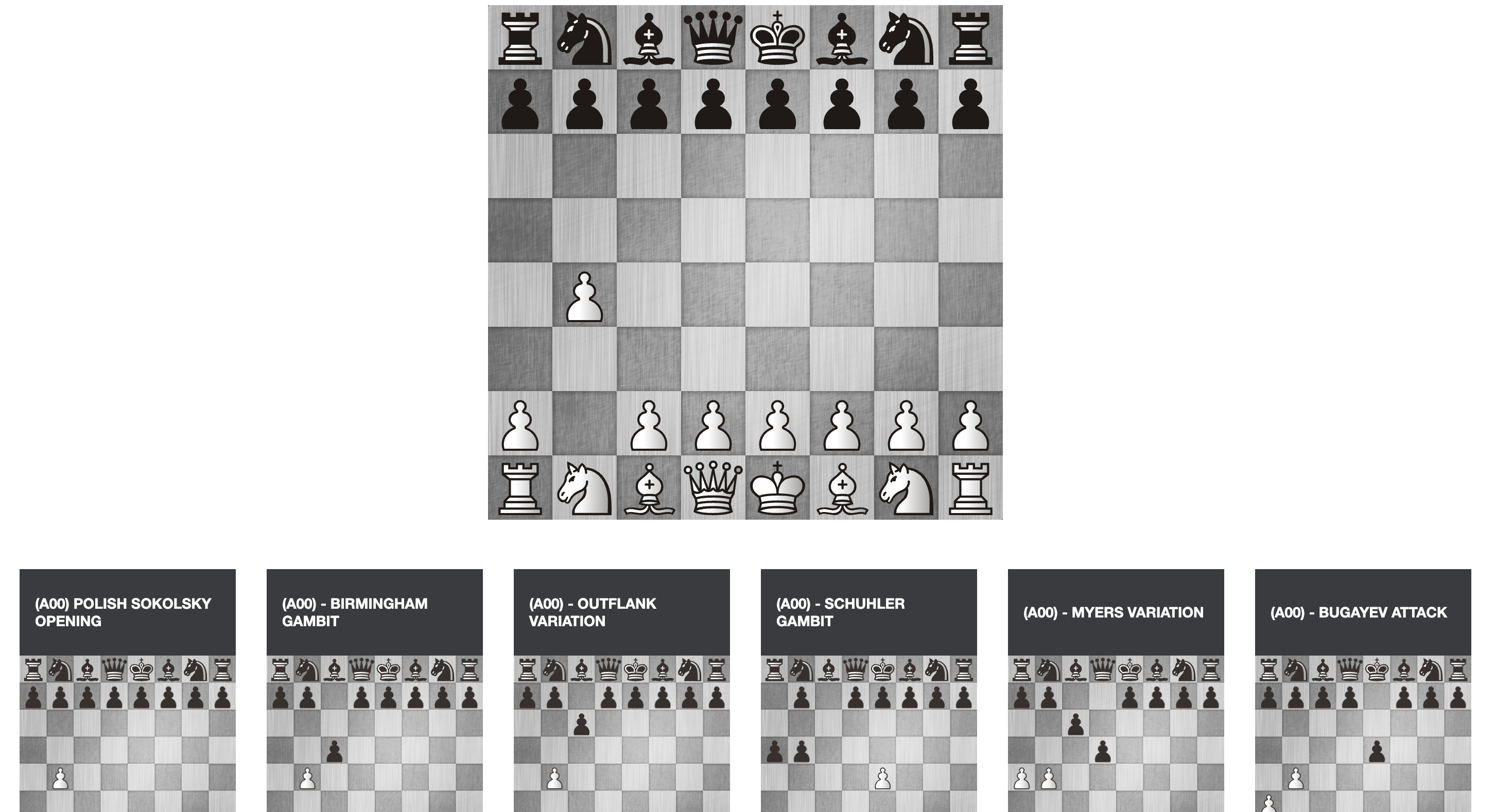
When you are within an opening (main line or variation), clicking on the save button will automatically save it in the My Repertoire section. If you also click on "Train", it will appear in the Training section with tactical problems from games played with that opening.
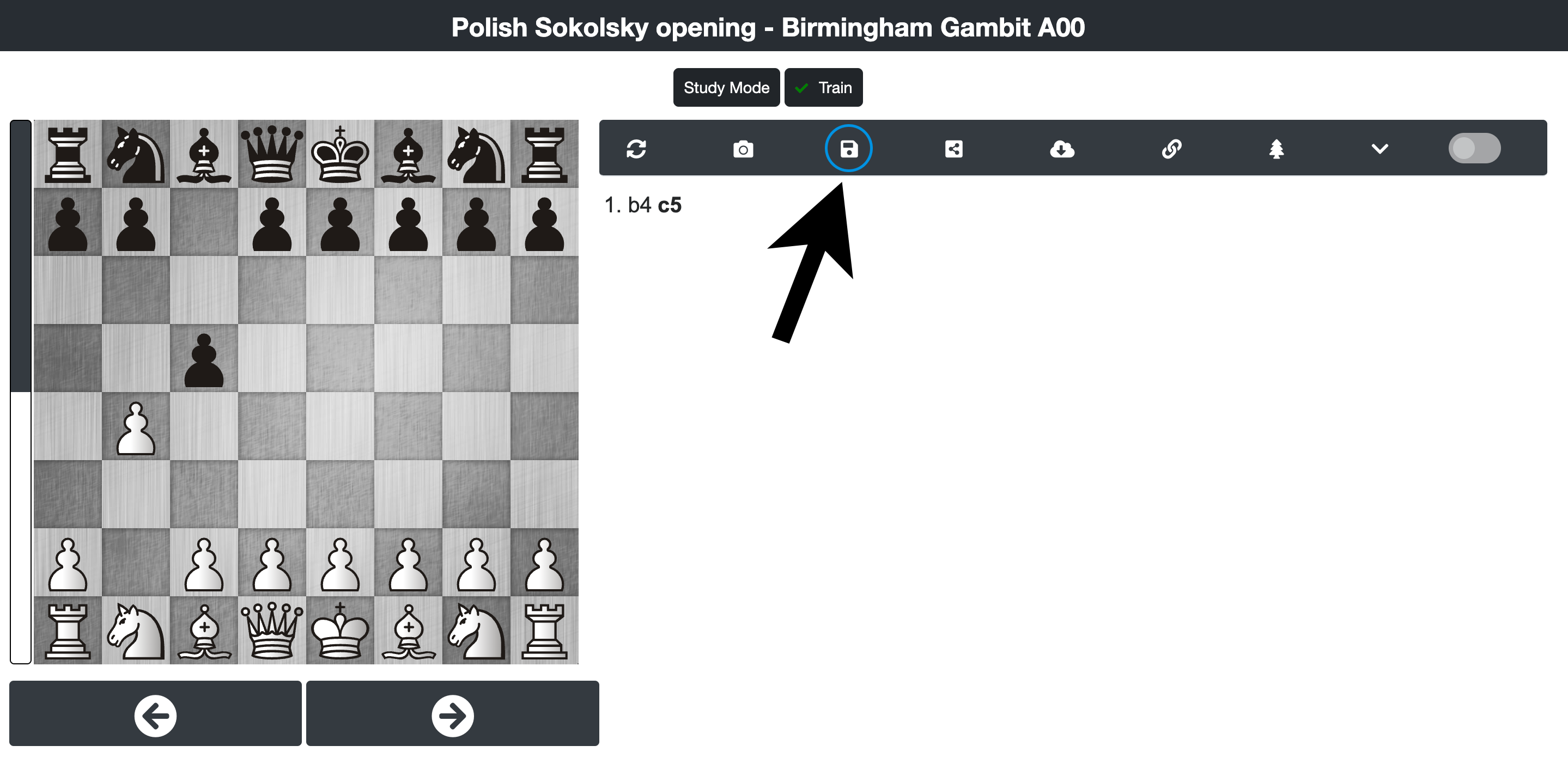
The Database interface is very intuitive — everything can be dragged and dropped. Folders can be nested within each other, and boards can be saved inside folders, so you can organize your database with total flexibility.
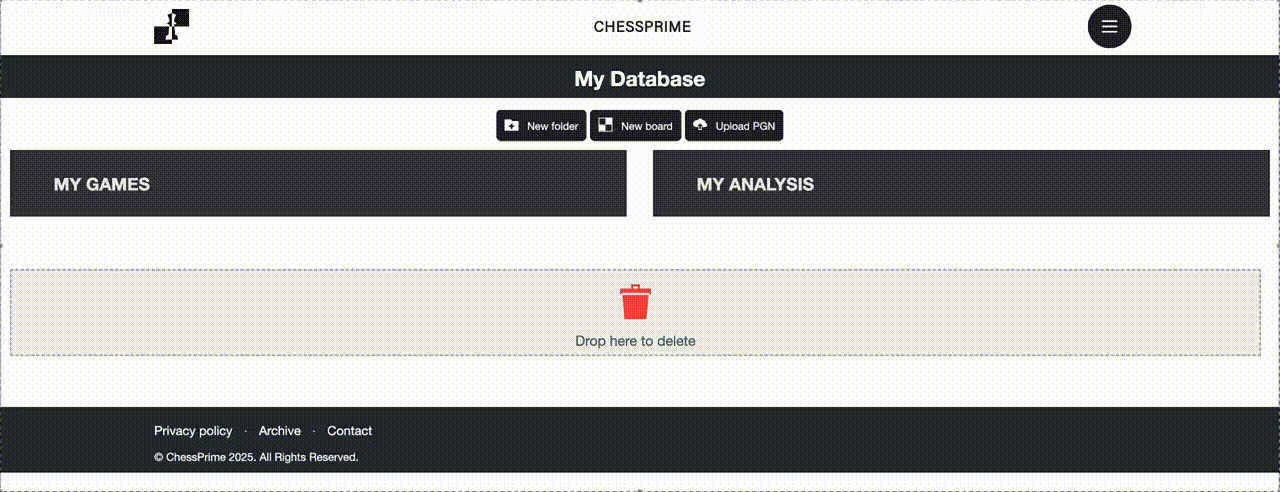
The training program is divided into three sections, one for each phase of the game: Openings, Middlegame, and Endgames.

Each section has several training blocks that can be expanded/collapsed by clicking the arrow or the block title.
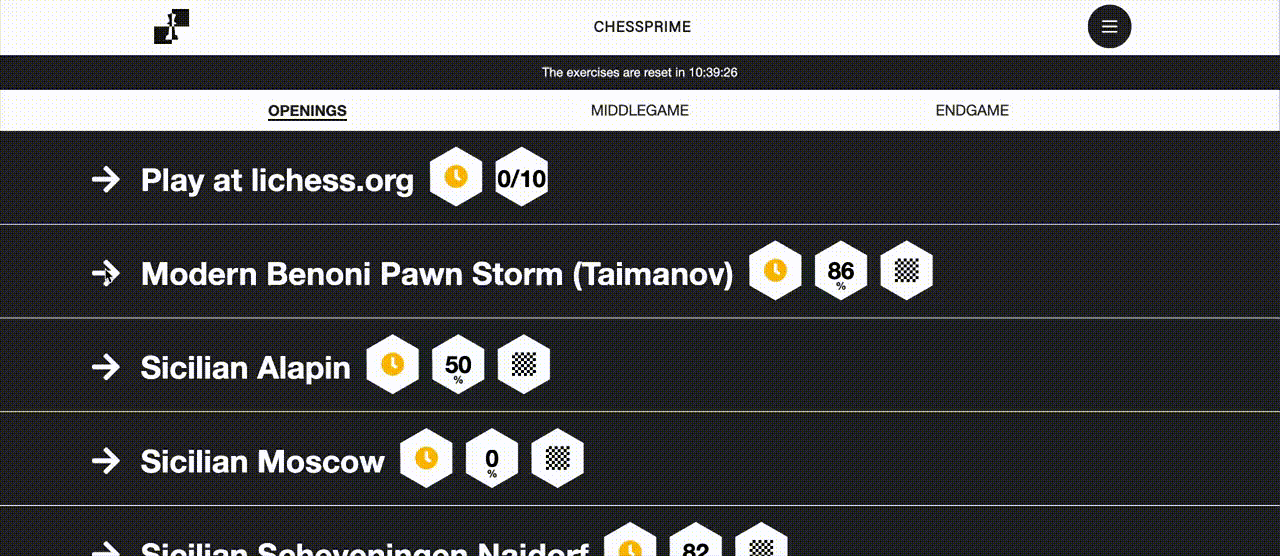
The openings section starts with a training block for playing online on lichess.org, where you must play at least 10 games per day. To use this block, first add your lichess.org username by clicking on “Type your Lichess Nickname here”. Once you enter it, it will be automatically linked to your account.
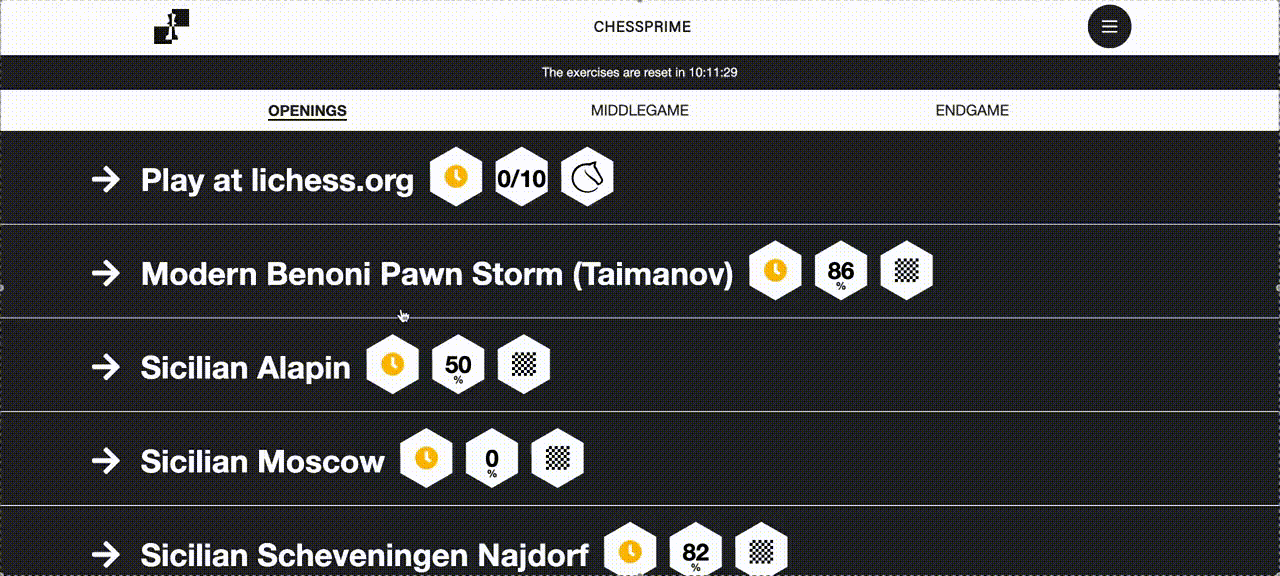
Once your lichess.org nickname is configured, you can import your games from the current day by clicking the “Update Games” button.
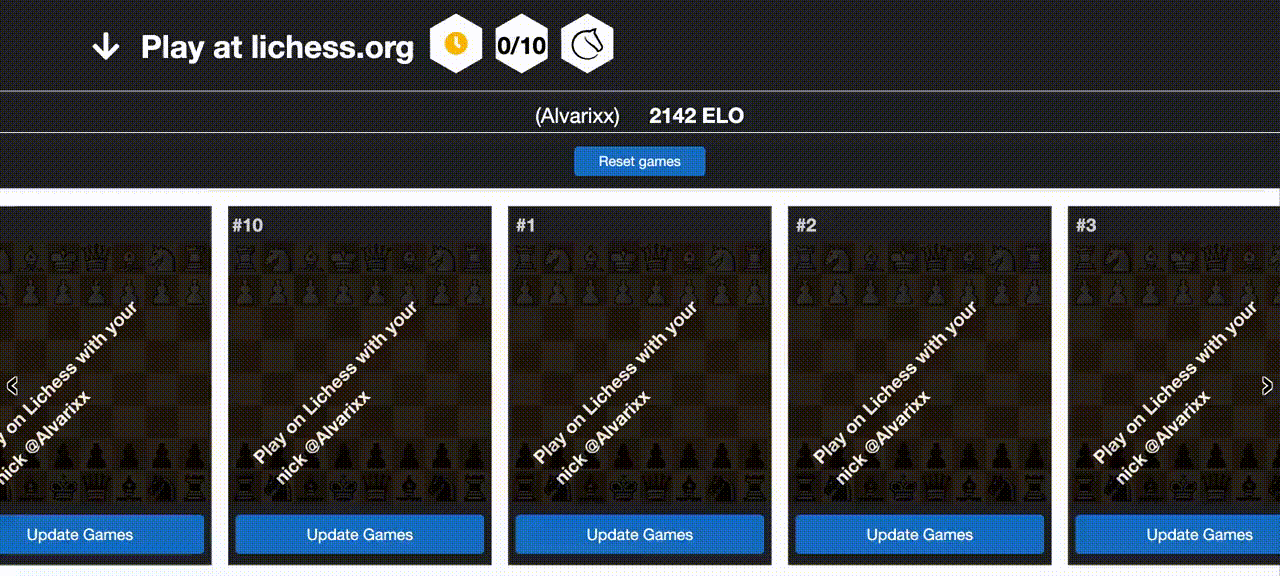
This training block is designed for playing at least 10 games per day and detecting weaknesses or possible improvements in your repertoire. After importing your games, the system tells you whether the opening/variation is part of your repertoire and which move was not included in it.
From the same training program, you can improve your repertoire by clicking on the specific game and opening the “My Repertoire” section, where you can make adjustments and save them by clicking the Save button.

Additionally, you can view high-level games played from similar positions — seeing how a Super GM handled your position can be very instructive.

The rest of the training blocks are dynamic — you decide which openings/variations appear in this section (see the question “How can I add openings to my repertoire?”).
The opening/variation training blocks consist of two types of exercises: exams and tactical problems.
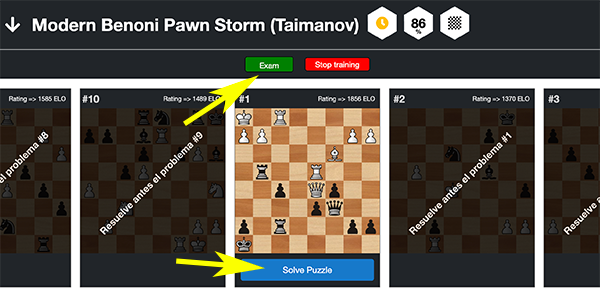
Exams are a powerful tool to help you memorize your repertoire. When you take an exam, the program generates exercises based on your repertoire, and you must get all the moves/variations right that are part of your repertoire.
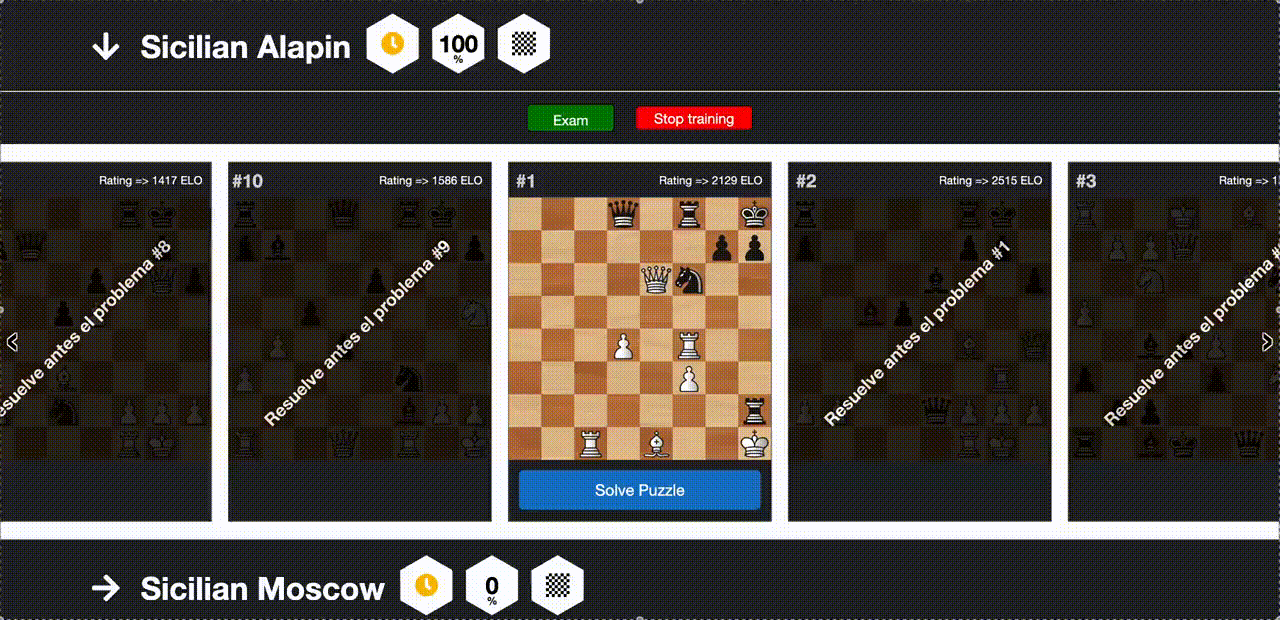
First, you must choose the color (White or Black) you want to practice.

Then, you must play each move in your repertoire. The program automatically plays the opponent’s moves, including all variations. If in doubt, you can use two types of hints: the piece that needs to move next or the comment attached to the next move in your repertoire. We recommend keeping your openings/variations well annotated, as this will improve your understanding of the positions and provide more clues when memorizing your repertoire.

Once you finish the exam, the program will give you a percentage score based on correct moves, which will later appear in the title of the training block.

The opening exam is optional — the program doesn’t automatically schedule it with spaced repetition, so it’s highly recommended that you review your repertoire whenever you feel it’s necessary. Your repertoire is always growing; you can improve it as much as you want while playing online games and identifying mistakes.
Tactical problems are puzzles derived from positions of the specific opening/variation. It’s good to train tactics, but even better to do so in typical positions from the openings/variations you usually play.
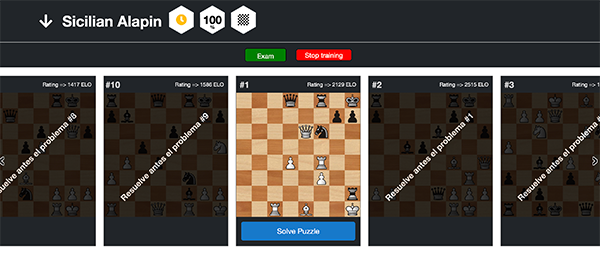
You have 10 problems per opening to solve each day, at different levels of difficulty. Every 24 hours, previously failed problems reappear (to reinforce learning), along with new ones.
Middlegame training blocks contain 10 more complex exercises that require strong positional understanding and calculation. The solution often includes not only a sequence of moves but also variations that must be calculated.
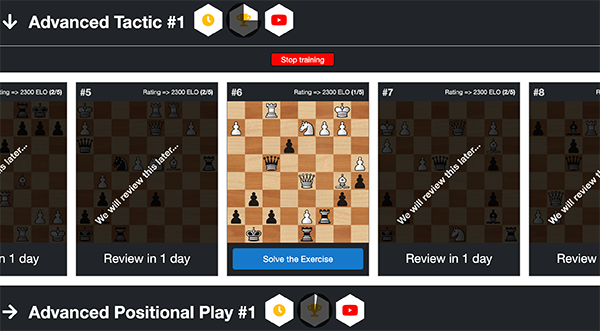
To understand the patterns of the exercises, we apply spaced repetition learning. If you fail an exercise, you’ll repeat it the next day; if you succeed, it will reappear after 1, 3, 7, 15, and 30 days to reinforce your learning. You can track your spaced repetition progress in the trophy image.

Each training block is accompanied by a series of videos that comment on the games and the positions used in the exercises.

If you’re unsure, you can use two types of hints: the piece that should move next or the comment associated with the next move.
The endgame training blocks are more interactive; you often have to play the position against the AI and achieve the objective (win or draw).
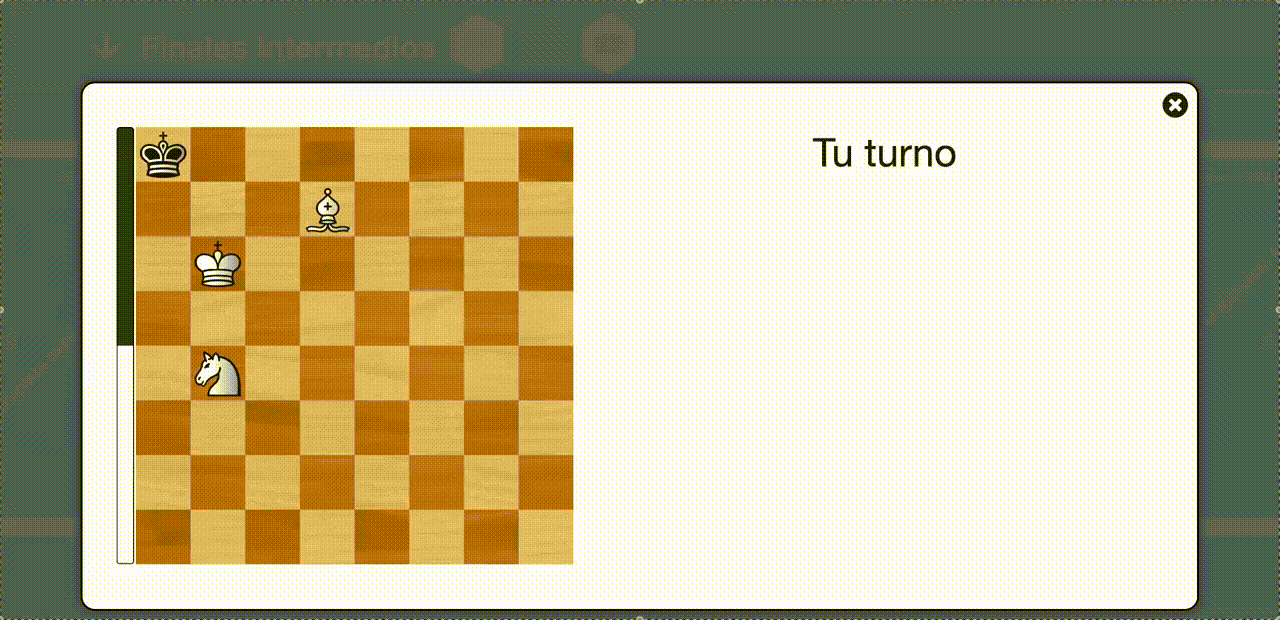
There are also all kinds of exercises, including problems with one or more solution variations that you must find.
The training program is based on scientific principles, so yes — it’s very effective for acquiring new knowledge and patterns. With spaced repetition learning, you retain information longer. The 4 key principles of spaced learning are:
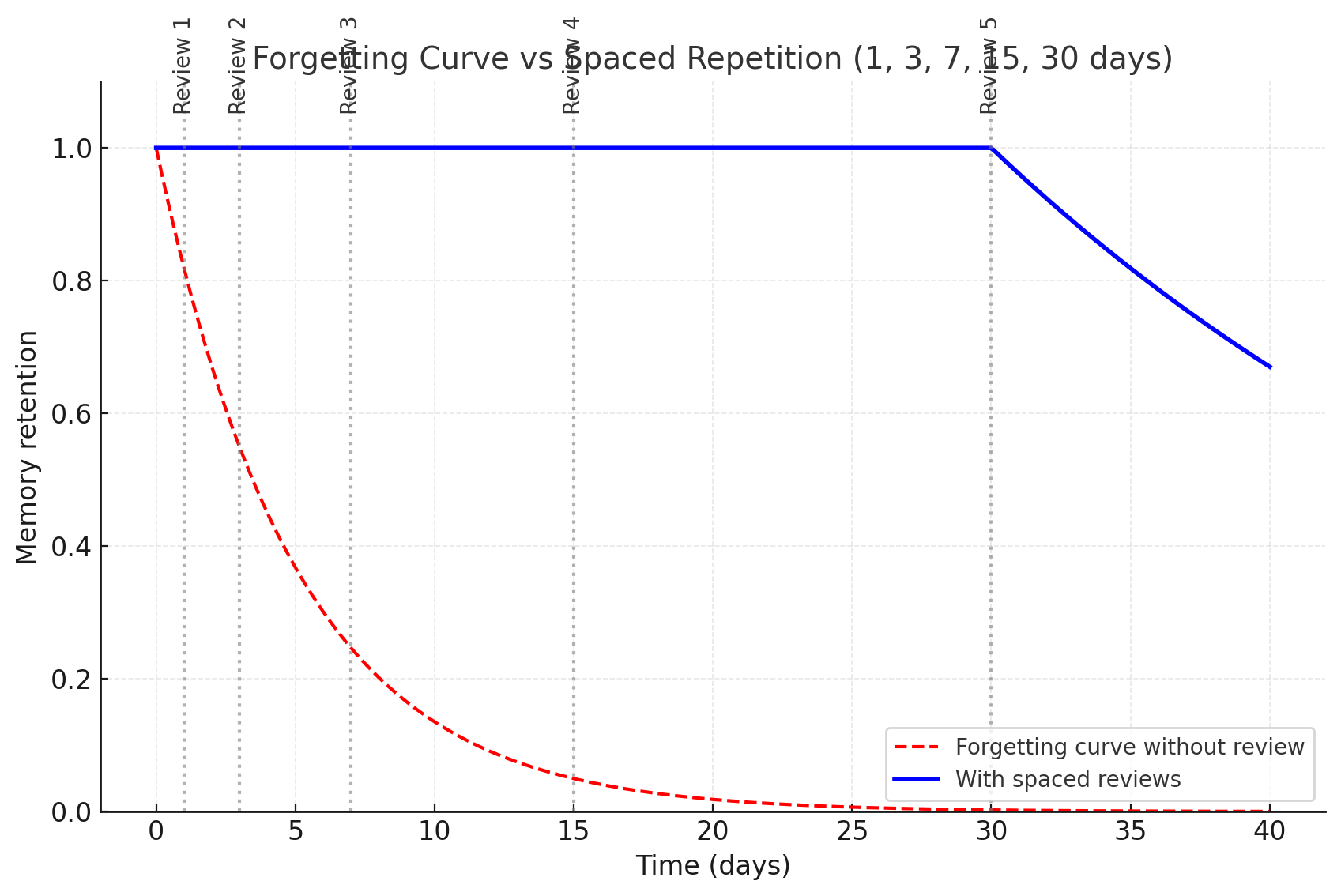
PS: The opening exam is optional — the program doesn’t automatically schedule it with spaced repetition, so it’s highly recommended that you review your repertoire whenever you consider appropriate. Your repertoire is always growing; you can improve it as much as you want while playing online games and finding weaknesses.
Yes, ChessPrime is free.
To delete your account and all your data, you must log in on the chessprime.com website or in any of our apps, go to the “My Profile” section, expand the “Personal Information” menu, and click the red “Delete my account” button.
Please note that this action is irreversible, and your data will be permanently deleted.